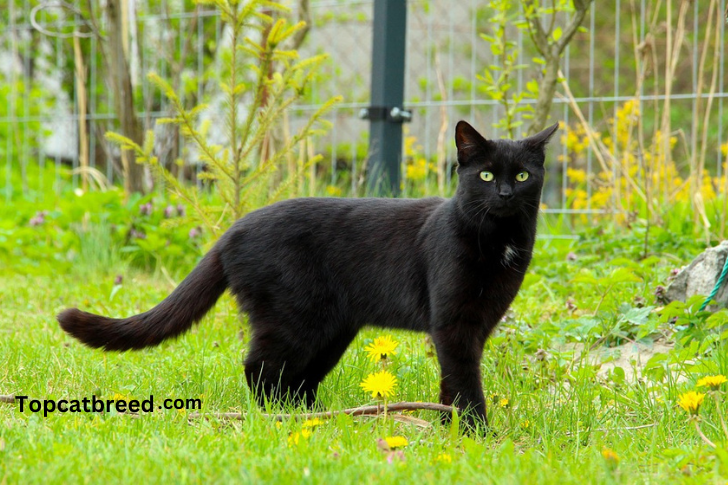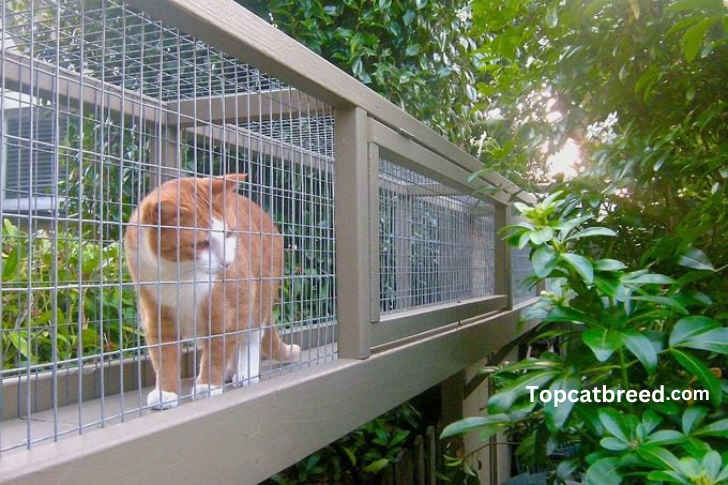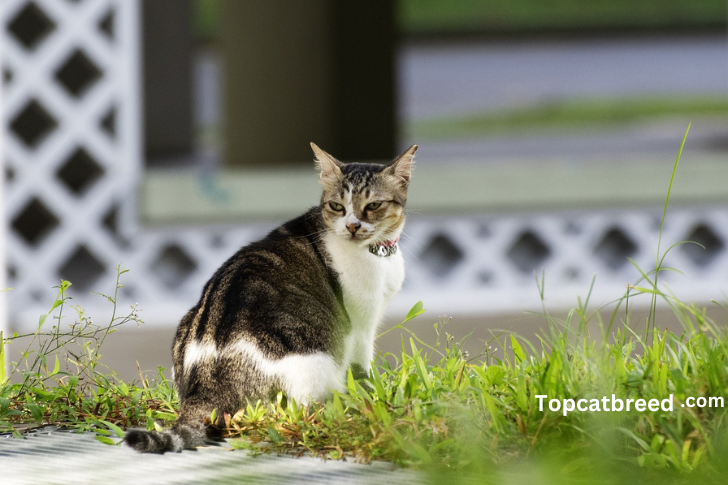Training Your Cat to Stay in the Yard
Cats are known for their adventurous spirits and innate curiosity, making the great outdoors an enticing playground. But as responsible cat owners, we often fret about their safety when they roam freely. The solution? Training your cat to stay within the confines of your yard, where they can enjoy the outdoors without wandering into potential dangers.
In this guide, we will explore effective strategies and techniques to create a secure and enriching outdoor environment for your feline companion. By understanding your cat’s instincts, employing positive reinforcement, and building a strong connection, you can successfully teach your cat to relish the yard as a safe and enjoyable haven.
Creating a Cat-Friendly Yard

Before embarking on the journey of training your cat, it’s crucial to create a yard that’s both appealing and secure. Start by inspecting the perimeter for any escape routes or gaps in fencing that your cat might exploit. Fix these vulnerabilities to ensure that your yard is escape-proof.
Install Cat-Proof Fencing Cat-proof fencing, such as catios (enclosed outdoor spaces) or specially designed barriers, can be a valuable addition to your yard. These structures allow your cat to experience the outdoors while preventing them from wandering too far.
Provide Enrichment Make the yard an exciting place for your cat. Offer toys, scratching posts, climbing structures, and hiding spots to keep them engaged. Cats are more likely to stay close if they have plenty of entertainment within the yard.
Safe Plants: Ensure that your yard is free from toxic plants. Cats may chew on greenery, and many common plants can be harmful if ingested. Research cat-safe plants and incorporate them into your garden.
Litter Box Access: Cats are particular about their litter boxes. Place one in the yard so they have a familiar place to relieve themselves. This encourages them to stay within the yard while enjoying the outdoors.
Make Your Cat’s Garden Safe

Creating a safe outdoor environment is crucial when training your cat to stay in the yard Cats are inquisitive creatures and their protection should be a key priority. Here are essential steps to make your cat’s garden safe.
Check for Escape Routes
Carefully inspect the yard for any gaps or weaknesses in fencing. Cats are skilled escape artists, and they can exploit even the tiniest openings. Ensure the perimeter is secure.
Install Cat-Proof Fencing
Consider investing in cat-proof fencing solutions like catios or specially designed barriers. These structures allow your cat to enjoy the outdoors while preventing them from wandering too far.
Toxic Plant Removal
Cats are known to chew on plants, and many common plants are toxic to them. Remove any toxic plants from your yard and replace them with cat-safe alternatives.
Cats need mental and physical stimulation Provide a wide range of toys, scratching posts, and climbing structures.. Cats are more likely to stay within the yard if they have plenty of entertainment.
Litter Box Access
Cats can be finicky about their litter boxes. Place one in the yard so they have a familiar spot to relieve themselves. This encourages them to stay in the yard while enjoying the outdoors.
Understanding Cat Behavior
To train your cat effectively, it’s essential to understand their behavior and instincts .Cats are territorial animals. They often establish territories and may be more likely to stay within their perceived boundaries.
Cats have a strong hunting instinct. Providing toys that mimic prey can keep them engaged within the yard .Cats are independent creatures. They appreciate having the freedom to explore but can learn to do so within the yard’s confines. Cats are naturally curious. They enjoy discovering new sights, sounds, and smells.. The yard can provide a safe space for them to satiate their curiosity
Cat Name Call Training
Training your cat to respond to its name is a valuable part of teaching them to stay in the yard. By associating their name with positive experiences, you can encourage them to come when called. Here’s how: once you utter your cat’s name, immediately follow it with something nice, such as treats, caressing, or playtime.
This creates a positive association with their name .Be consistent when using their name. Use it in various situations and always in a gentle, inviting tone.
Begin training indoors where there are fewer distractions. Say your cat’s name and reward them when they respond by looking at you. As your cat becomes more responsive indoors, move the training to the yard. Start with short sessions, gradually increasing the time they spend outdoors.
How Do You Keep a Cat Out of the Yard?

Preventing your cat from leaving the yard requires a combination of strategies:
Supervision: Initially, supervise your cat closely in the yard. Watch for any attempts to leave and gently guide them back to the designated area.
Positive Reinforcement: Continue to use positive reinforcement, including treats and praise, when your cat stays within the yard.
Deterrents: Use natural deterrents like citrus peels or motion-activated sprinklers to discourage your cat from venturing beyond the yard’s boundaries.
Cat-Proof Barriers: Consider installing cat-proof fencing to ensure your cat cannot escape. These barriers are specifically designed to keep cats within the yard.
Consistency: Training must be consistent. Ensure that everyone in the family follows the same training practices and reinforces the same boundaries..
Common Challenges and Solutions
While training your cat to stay in the yard, you may encounter some common challenges. Here are potential solutions:
Escape Attempts: If your cat attempts to escape, remain calm and gently guide them back into the yard. Avoid scolding, as this can create a negative association with the yard.
Lack of Interest: If your cat seems disinterested in the yard, provide more entertainment and playtime. Try different toys and activities to pique their curiosity.
Fear of the Outdoors: Some cats may initially fear the outdoors. Start with short, supervised sessions, gradually increasing their exposure to the yard.
Inconsistency: Consistency is key in training. Ensure that all family members follow the same training protocols and reinforce the same boundaries.
Neighbor Cats: Neighbor cats can be a source of distraction. Consider using deterrents to discourage them from entering your yard.
Positive Reinforcement Techniques
Training your cat to stay within the confines of your yard relies heavily on positive reinforcement. By associating the yard with pleasant experiences, you can motivate your cat to remain within the boundaries.
Treats and Praise: Whenever your cat stays within the yard, offer them treats and plenty of praise Positive reinforcement strengthens your bond with your cat..
Clicker Training: Clicker training is a good way to teach cats.. When your cat exhibits the desired behavior—staying in the yard—clicks the clicker and reward them.
Boundary Training: Define clear boundaries for your cat using markers like flags or string. When they stay within these boundaries, reward them. Over time, your cat will learn the yard’s limits.
Outdoor Playtime: Engage your cat in outdoor play sessions within the yard. This reinforces the idea that the yard is a fun and safe place to be.
Return Training: Teach your cat to return to you when called. Use a consistent recall command, and reward your cat when they come to you. This command can be invaluable in keeping your cat within the yard.
Final Thoughts
Training your cat to stay in the yard is a fulfilling journey that elevates your cat’s well-being and security. Craft a secure and engaging outdoor space, employ positive reinforcement methods, comprehend your cat’s behavior, and adhere to consistent training approaches for success. How to train a cat.
Recognize the individuality of each cat, and exercise patience throughout the training process. Your endeavors will establish a balanced relationship, enabling your cat to relish the outdoor wonders while remaining secure and connected to home.
FAQS
1-How do you train a cat not to run away?
Creating a cat-friendly yard involves adding cozy spots, interactive toys, and vertical spaces for climbing. These elements enrich the outdoor experience, keeping your cat entertained and content within the safe confines of your yard.
2-Can all cats be trained to stay in the yard?
While most cats can be trained to stay in the yard, individual personality and experiences can affect their response to training.
3-What if my cat has a history of escaping?
Cats with a history of escaping may require extra patience and consistent training. Secure fencing and supervision are essential.
4-Is it possible to train an older cat to stay in the yard?
Yes, older cats can be trained, but it may take more time and persistence. Start with short outdoor sessions and gradually increase their yard time.
5-Are there any devices that can help in training cats to stay in the yard?
Some devices like motion-activated sprinklers or cat-proof fencing can aid in training and keeping cats within the yard.
conclusion
Guiding how to train a cat to stay safe is a fulfilling endeavor that promotes their well-being and ensures a safe outdoor experience. Establish a secure environment, utilize positive reinforcement methods, and grasp your cat’s needs to effectively introduce them to the outdoor realm while keeping them close to home. Patience and consistency play pivotal roles, recognizing the uniqueness of each cat in their training response. This approach fosters a harmonious balance, allowing your feline companion to enjoy the outdoors securely.. The result is a harmonious coexistence where your cat can explore and play within the boundaries of your yard, keeping them safe and content.




